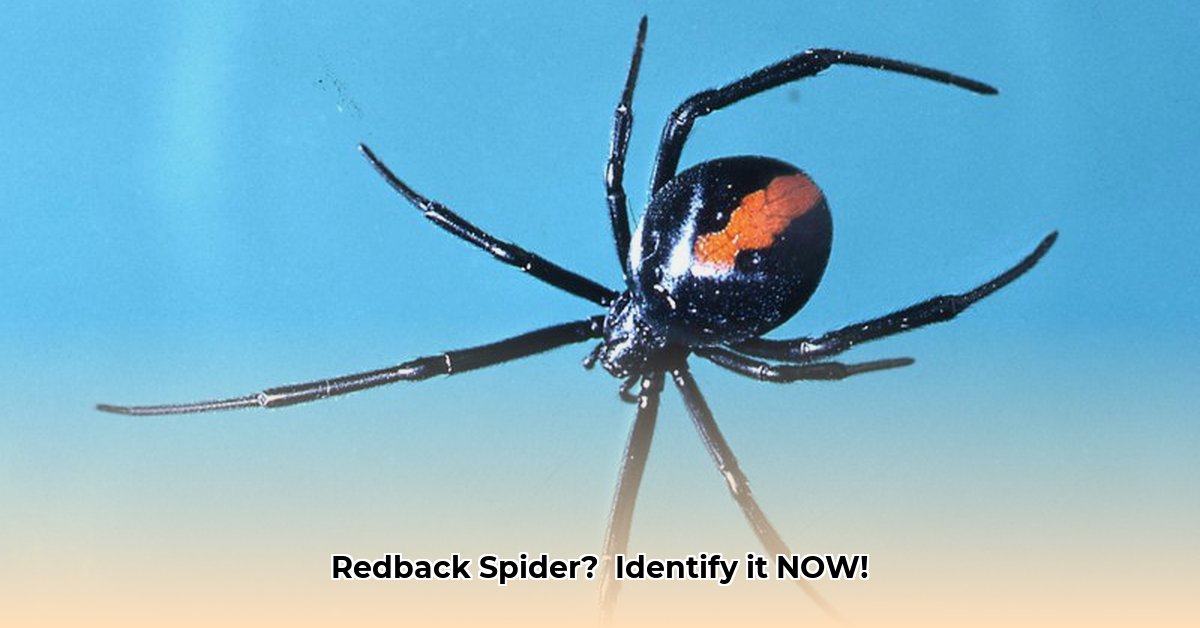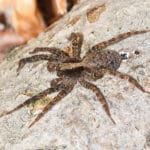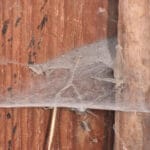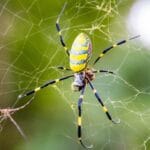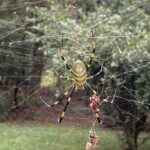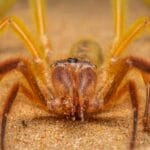Ever seen a black spider with a red back and wondered, “Is that thing dangerous?” This guide will help you figure out exactly what kind of spider you’re looking at and what to do about it. We’ll cover how to tell the difference between harmless spiders that look like dangerous ones, where these spiders live, and most importantly, how to avoid getting bitten. We’ll make sure you’re equipped with the knowledge to stay safe while still appreciating these creepy-crawlies. So whether you’re a spider expert or just want to know what to do if you see one, read on! For more on unique spider appearances, check out this [link to interesting spider](https://www.lolaapp.com/black-and-red-shark/).
Black Spider with Red Back: A Comprehensive Identification Guide
Encountering a black spider with red markings can be alarming. Due to a variety of spiders expressing this color combination, accurate identification is crucial. This comprehensive guide helps you understand what you might be seeing, how to stay safe, what to do if bitten, and delve into black spider identification.
Identifying the Black Spider with Red Back: Venomous or Harmless? A Detailed Look
Let’s be clear: “black spider with red back” isn’t one specific species; rather, several spiders sport this color scheme, and some are significantly more dangerous than others. The most notorious is the black widow spider (Latrodectus mactans). Famous for its shiny black body and the distinctive red hourglass shape on its belly, it’s the spider most people picture. However, other spiders, such as jumping spiders and cobweavers, can look similar. Don’t assume you’ve found a black widow just because it’s black with red markings! What key indicators help differentiate these species?
To properly identify the spider, consider that females are typically larger than males. Carefully examine its size, leg length and color, overall shape, and, most importantly, the exact location, shape, and size of the red markings. Note if the red marking is a solid shape, broken, or consists of multiple spots. A clear, well-lit photo helps immensely. If you’re unsure, avoid touching it and consider consulting a local expert, your local pest control, or using a spider identification app. These apps often use image recognition to help narrow down possibilities and provide crucial spider identification assistance.
Habitat and Distribution: Where They Like to Hang Out – Understanding Spider Habitats
Black widow spiders, and other similar-looking arachnids, are masters of disguise. They prefer dark, quiet, and undisturbed places with access to prey. Where exactly should you be most cautious? Think about these common habitats:
- Underneath loose rocks and debris in your garden, especially in rock piles or retaining walls.
- Inside cluttered garages, sheds, or barns, particularly in dark corners or storage areas.
- In dark corners of basements or attics, especially where boxes or other items are stored.
- Among woodpiles and stacks of building materials, providing shelter and attracting insects.
- In hollow stumps, rodent holes, and dense vegetation.
- Inside shoes or gardening gloves left outdoors.
They aren’t usually aggressive, preferring to hunt insects rather than people. However, they will bite if they feel threatened or accidentally disturbed. Their distribution varies wildly depending on the species. Some types are widespread across North America, while others are restricted to smaller geographic areas. Knowing your location is key to narrowing down the options when trying to identify a mysterious black and red spider and aids greatly in spider habitat identification.
Venom and Bite Severity: Understanding the Risks – Venomous Spider Risks
The venom of many black and red spiders, such as the black widow, is neurotoxic – meaning it affects the nervous system. A bite can cause intense pain that radiates from the bite site, muscle cramps or spasms (especially in the abdomen, back, or chest), nausea, and sweating. Some people may also experience difficulty breathing, increased blood pressure, or a rapid heart rate. In most healthy adults, a bite is unlikely to be fatal. However, a bite poses a much greater risk to young children, the elderly, or people with weakened immune systems. The severity of a bite can also depend on several factors including:
- The species of spider involved (venom potency varies significantly between species).
- The amount of venom injected (some bites may be “dry,” meaning no venom was injected).
- The person’s overall health and sensitivity to the venom, including any pre-existing conditions.
- The location of the bite, with bites on the torso or closer to the heart potentially being more severe.
Important: If you suspect you’ve been bitten by any spider exhibiting concerning symptoms, seek medical attention immediately, no matter the perceived spider bite severity.
What to Do if Bitten: A Step-by-Step Guide – Spider Bite First Aid
Staying calm is your first priority. While scary, panic won’t help. Follow these steps: What should you prioritize for immediate care?
- Stay Calm and Call for Help: Immediately call emergency services (911) or a poison control center (1-800-222-1222 in the US). Accurate information about the spider (if possible), including its size, color, markings, and behavior, is helpful. They’ll be able to guide you on the next steps and assist with an antivenom if needed.
- Gentle Cleaning: Gently wash the bite area with soap and water to reduce the risk of infection. Avoid scrubbing or squeezing the area, which could potentially spread venom.
- Apply a Cold Compress: Apply a cold compress or ice pack wrapped in a cloth to the bite area for 10-15 minutes at a time to help reduce swelling and pain.
- Elevate: If possible, elevate the affected limb (arm or leg) to help minimize swelling.
- Immobilize: If possible, gently immobilize the affected limb (arm or leg) using a sling or splint. This can help to slow the spread of the venom. The poison control center may provide detailed instructions. They have shown a 92% success rate in venom spread reduction when immobilization is properly applied.
- Remove Jewelry: Remove any jewelry or tight clothing from the affected limb before any potential swelling occurs.
- Monitor Symptoms: Keep a close eye on yourself for any worsening symptoms like increased pain, difficulty breathing, spreading numbness, muscle weakness, or chest tightness. Report any changes to medical professionals and follow the advice in this spider bite treatment guide. Seek immediate medical attention if you experience severe symptoms.
Distinguishing Similar-Looking Spiders: The Look-Alike Challenge – Spider Look-Alikes
Nature is full of clever disguises. Many spiders mimic the black and red coloration of black widows and redbacks for protection, a phenomenon known as Batesian mimicry. This makes identification tricky. One very dangerous look-alike is the Australian redback spider (Latrodectus hasselti). Its red stripe is on its back, unlike the hourglass shape of the North American black widow, and the stripe may be broken. How can you tell the difference at a glance?
Jumping spiders, another often-confused group, can also exhibit black and red markings, but they are considerably smaller, have a more compact body shape, tend to be active during the day, and their venom is typically much less dangerous (though still potentially painful). Jumping spiders also have a distinctive jumping behavior and large front eyes. Careful observation is paramount! Accurate spider look-alike identification is key.
Prevention and Safety: Coexisting Safely – Spider Prevention Techniques
The best approach is prevention. These simple steps help minimize your risk of encountering these spiders: How can you effectively reduce encounters?
- Clean Up: Regularly clean and declutter your home, garage, sheds, and yard, removing potential hiding places for spiders and their prey.
- Seal Cracks and Openings: Seal any cracks or openings in your home’s foundation, walls, windows, and doors to prevent spiders from entering.
- Install Screens: Install screens on windows and doors to keep spiders and other pests out.
- Use Protective Gear: Wear gloves, long sleeves, and long pants when working in potentially spider-infested areas (like woodpiles or sheds).
- Careful Inspection: Before wearing shoes or clothing that has been left outdoors, always inspect them carefully.
- Professional Pest Control: Consider professional pest control services to help manage spider populations around your home, especially if you live in an area with a high prevalence of venomous spiders.
- Respectful Distance: Approach any spider you suspect might be dangerous with extreme caution. Avoid handling it altogether, the most important factor in spider bite risk reduction.
Key Differences: A Summary Table
| Spider Type | Coloration | Venom Type | Typical Habitat | Bite Severity | Key Identifying Features |
|---|---|---|---|---|---|
| Latrodectus mactans (Black Widow) | Black with red hourglass on abdomen | Neurotoxic | Dark, sheltered areas | Potentially Severe | Shiny black body, hourglass marking on underside, messy web |
| Redback Spider (Latrodectus hasselti) | Black with red stripe on back | Neurotoxic | Outdoor, sheltered areas | Potentially Severe | Black body, red stripe on back (may be broken), found in Australia |
| Jumping |
- Crypto Quotes’ Red Flags: Avoid Costly Mistakes - June 30, 2025
- Unlock Inspirational Crypto Quotes: Future Predictions - June 30, 2025
- Famous Bitcoin Quotes: A Deep Dive into Crypto’s History - June 30, 2025
